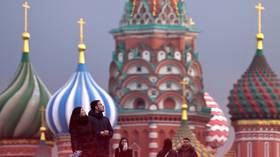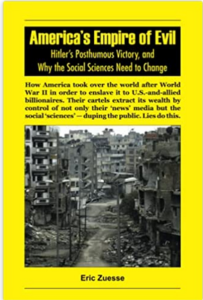The party of jailed former Pakistani Prime Minister Imran Khan, which according to still incomplete results has won most mandates in the February 8 elections, said it was ready to form a government amid warnings by the nuclear-armed country’s powerful military that politicians should put the people’s interests above their own.
The Election Commission of Pakistan (ECP) has so far announced the winners of 253 of the 265 contested parliamentary seats amid a slow counting process hampered by the interruption of mobile service.
According to those results, independents backed by Khan’s Pakistan Tehrik-e Insaf (PTI) won 92 seats, while former Prime Minister Nawaz Sharif’s Pakistan Muslim League Nawaz (PML-N) garnered 71, and the Pakistan People’s Party (PPP) obtained 54 mandates. The remainder are spread among other small parties and candidates.
Both Khan and Sharif declared victory.
As results appeared to point to a hung parliament, PTI’s acting Chairman Gohar Ali Khan on February 10 told a news conference in Islamabad that the party aimed at forming a government as candidates backed by it had won the most seats.
Khan also announced that if complete results were not released by February 10 in the evening, the PTI intended to stage a peaceful protest on February 11.
Third-placed PPP, led by Bilawal Bhutto Zardari, a former foreign minister who is the son of assassinated former Prime Minister Benazir Bhutto, could play kingmaker in case of talks to form a coalition government.
Sharif said on February 9 that he was sending his younger brother and former Prime Minister Shehbaz Sharif as an envoy to approach the PPP and other political parties for coalition talks.
The elections were held in a highly polarized environment as Khan, a former cricket superstar, and his party were kept out of the election. Khan is currently in prison after he was convicted of graft and leaking state secrets. He also saw his marriage annulled by a court.
Earlier on February 10, the chief of Pakistan’s powerful military urged the country’s political class to set aside rivalries and work for the good of the people.
“The nation needs stable hands and a healing touch to move on from the politics of anarchy and polarization, which does not suit a progressive country of 250 million people,” General Syed Asim Munir said in a statement.
“Political leadership and their workers should rise above self-interests and synergize efforts in governing and serving the people, which is perhaps the only way to make democracy functional and purposeful,” Munir said.
The military has run Pakistan for nearly half its history since partition from India in 1947 and it still wields huge power and influence.
The February 8 vote took place amid rising political tensions and an upsurge of violence that prompted authorities to deploy more than 650,000 army, paramilitary, and police personnel across the country.
Despite the beefed-up security presence, violence continued even after the election. On February 10, the leader of Pakistan’s National Democratic Movement, Mohsin Dawar, was shot and wounded in Pakistan’s North Waziristan tribal district.
Daward was shot and injured as he addressed supporters in front of a military camp in Miramsha in the country’s northwest.
Dawar, a well-known Pashtun politician, was shot in the thigh and rushed to a nearby hospital in stable condition. He was later transported to the capital, Islamabad, for further treatment. His injuries are not life threatening. Videos of a bloodied Dawar circulated on social media
Three supporters were killed and 15 more injured in the incident, Rahim Dawar, a party member and eyewitness who is of no relation to the Pashtun politician, told RFE/RL.
Dawar, who was running for the lower house of parliament, arrived at the headquarters of the regional election committee, located inside the military camp, to demand officials announce the result of the vote.
Soldiers barred Dawar from entering and he was later shot as he addressed supporters outside the office. Dawar’s supporters accuse the police and security forces of firing at them.
The security forces have yet to respond to the allegation. Local media, citing unidentified security sources, reported that some policemen were also killed in the incident, but RFE/RL could not confirm that.
Dawar won a five-year term in 2018 and served in parliament until it was dissolved. Election officials later in the day said Dawar had lost the election.
Crisis-hit Pakistan has been struggling with runaway inflation while Islamabad scrambles to repay more than $130 billion in foreign debt.
Reported irregularities during the February 8 poll prompted the United States, Britain, and the European Union to voice concerns about the way the vote was conducted and to urge an investigation.
Pakistan’s Foreign Ministry on February 10 rejected the criticism.
PTI was banned from participating in the vote because the ECP said it had failed to properly register as a party. Its candidates then decided to run as independents after the Supreme Court and the ECP said they couldn’t use the party symbol — a cricket bat. Parties in the country use symbols to help illiterate voters find them on the ballots.
Yet the PTI-backed independents have emerged as the largest block in the new parliament. Under Pakistani law, they must join a political party within 72 hours after their election victory is officially confirmed. They can join the PTI if it takes the required administrative steps to be cleared and approved as a party by the ECP.
Khan, 71, was prime minister from 2018 to 2022. He still enjoys huge popularity, but his political future and return to the political limelight is unclear.
With reporting by Reuters, AFP, and AP
This content originally appeared on News – Radio Free Europe / Radio Liberty and was authored by News – Radio Free Europe / Radio Liberty.
This post was originally published on Radio Free.















